#portrait of père tanguy
Explore tagged Tumblr posts
Text
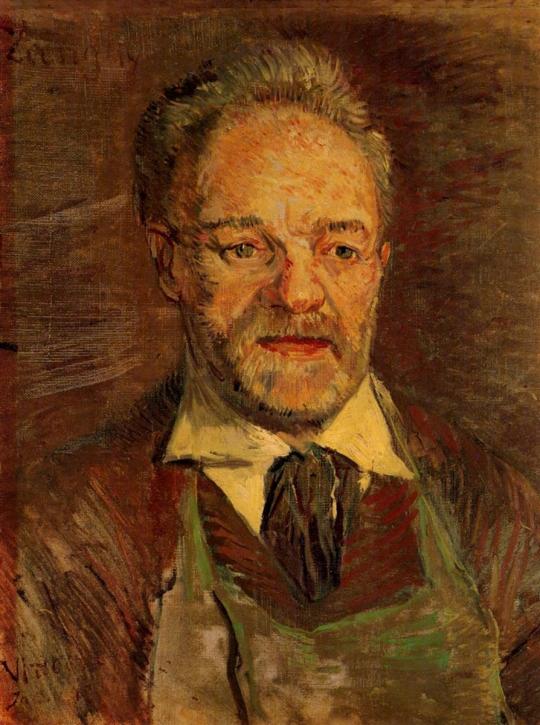
-Portrait of Père Tanguy-
#art#art history#culture#curators#history#artwork#museums#van gogh#vincent van gogh#vintage#painting
111 notes
·
View notes
Text

Vincent van Gogh - Portrait of Père Tanguy, 1887
7 notes
·
View notes
Text
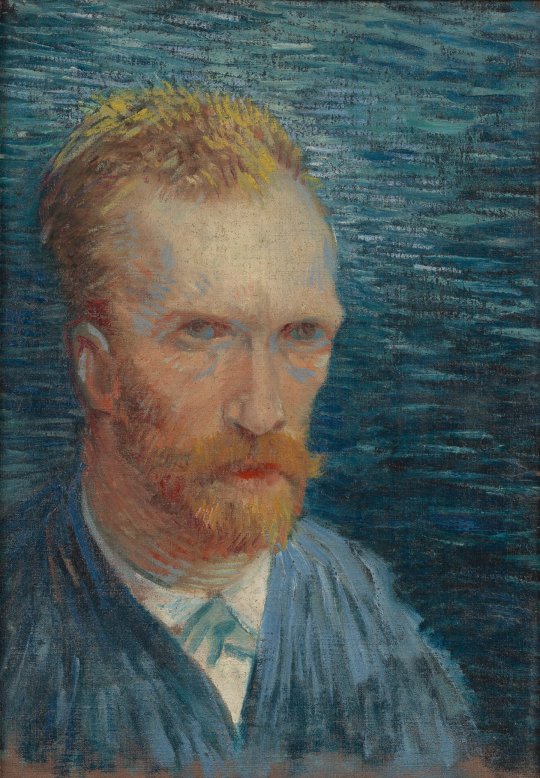
Vincent van Gogh ֍ Self-portrait (1887)
For this self-portrait, Van Gogh used many shades of blue. In the background, but also in his face: he even made the whites of his eyes blue.
Out of lack of money, he painted the self-portrait on the back of one of his still lifes. He no longer had a new canvas in the house. Previously, he had received painting materials on credit or in exchange for his paintings. He received it from Père Tanguy, owner of a Parisian art supplies shop. But that had stopped because of his wife. In a letter to his brother Theo, Vincent angrily described her as an 'old witch'.
10 notes
·
View notes
Text
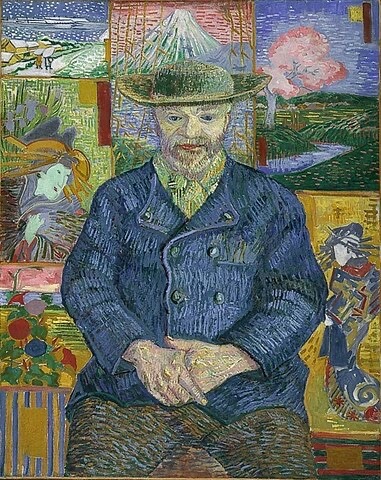

Vincent van Gogh, Portrait of Père Tanguy, 1887
Gihachiro Okuyama, Old Man Tanguy - Van Gogh, Showa era, 1926-1989, Woodblock print
#Gihachiro Okuyama#vincent van gogh#japanese prints#japanese art#japanese artist#japanese aesthetic#japonisme#japonism#post impressionism#post impressionist art#dutch artist#dutch painter#dutch painting#art on tumblr#aesthetic#beauty#modern art#art history#aesthetictumblr#tumblraesthetic#tumblrpic#tumblrpictures#tumblr art#tumblrstyle#artists on tumblr
30 notes
·
View notes
Text
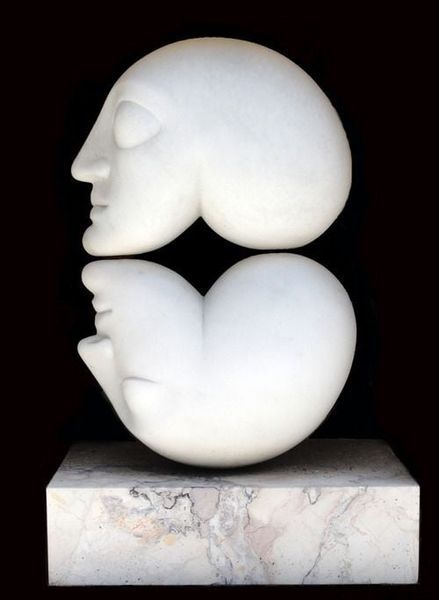

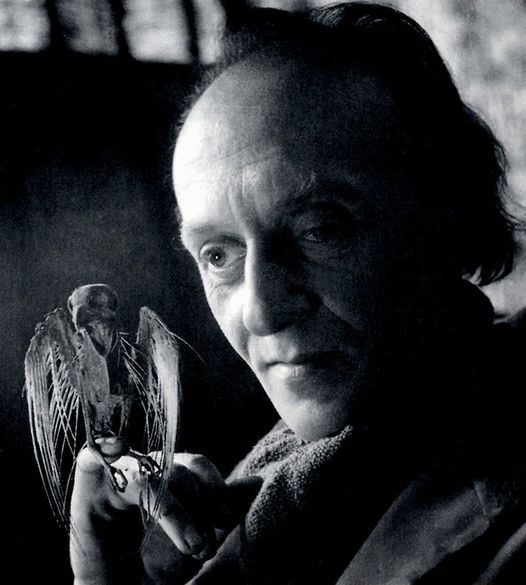
Victor Brauner (b in Moldova, 1903 - 1966, Paris)
Romanian painter, sculptor and draughtsman, active in France. As a child, he shared his father’s passionate interest in spiritualism, heralding a lasting preoccupation with the occult. In 1912 he accompanied his family to Vienna, and from 1916 to 1918 attended the evangelical school at Braila, near Galati, studying zoology with great enthusiasm; he also started to paint.
In 1921 he spent a brief period at the School of Fine Arts in Bucharest, where his first exhibition was held in 1924 at the Galerie Mozart. The same year, Brauner and the poet Ilarie Voronca founded the review 75HP, in which he published his manifesto of ‘Pictopoésie’ and an article on ‘Le Surrationalisme’. From 1928 until 1931 he worked with the Dada and Surrealist review UNU, which reproduced his drawings and paintings.
Settling in Paris in 1930, he met Constantin Brancusi, who introduced him to photography, and Yves Tanguy, through whom he met the major Surrealists. He lived in the same building as Tanguy and Alberto Giacometti. His premonitory Self-portrait with Enucleated Eye (1931; Paris, priv. col.) became a cause célèbre for the Surrealists, whom he joined officially in 1932.
André Breton wrote the introduction for his first one-man show at the Galerie Pierre in 1934, the year of Monsieur K’s Power of Concentration (Paris, priv. col.) and the Strange Case of Monsieur K (priv. col.), departures from Brauner��s earlier work and reminiscent of Alfred Jarry’s Père Ubu. Returning to Bucharest briefly in 1935, he joined the clandestine Romanian Communist Party but left in 1936 at the beginning of the Soviet show trials.
http://www.all-art.org/art_20th_century/brauner2.html
31 notes
·
View notes
Photo

MWW Artwork of the Day (6/18/23) Vincent van Gogh (Dutch, 1853-1890) Portrait of Père Tanguy (Autumn 1887) Oil on canvas, 92 x 75 cm. Musée Rodin, Paris
The brightly colored painting and confident subject represent a shift in Vincent's attitude. Van Gogh called his use of bright colors "gymnastics" that through experimentation created great depth, harmony and balance in his work. The painting contains a background of Van Gogh's Japanese prints that were sold at Tanguy's shop. On top of Tanguy's hat is Mount Fuji; Kabuki actors share the wall with cherry trees in bloom. The Japanese paintings represent Van Gogh's search for serenity, which he describes in a letter to his sister during this period, "Having as much of this serenity as possible, even though one knows little -- nothing -- for certain, is perhaps a better remedy for all diseases than all the things that are sold at the chemist's shop." In an effort to capture serenity in his painting, Van Gogh paints Tanguy with a calm, contemplative nature. Historian of Symbolism Naomi Maurer describes him as having the "iconic tranquility of Buddha.
22 notes
·
View notes
Text

Je n’avais jamais rien de lui, mais en entendant un conseil d’un libraire à un client (je tendais l’oreille), j’ai été tentée, et ma foi, je n’ai pas regretté.
En résumé, et je ne spoile rien puisque ce que je vais dire là est contenu dans les premières pages, un homme ordinaire a jeté un autre homme, un promoteur immobilier, à la mer et l’a laissé se noyer. Tout le reste de cet assez court roman sera son quasi monologue, face au juge, pour expliquer ce qui l’a conduit à ce geste meurtrier.
C’est un peu comme un polar à l’envers, les mobiles apparaissent après la révélation de l’identité du meurtrier. Et ces mobiles sont complexes, et variés ; ils relèvent de la moralité, mais aussi de ce sentiment d’enlisement des classes moyennes, déclassées de surcroît, dans ce coin de Bretagne dépeuplé, où les gens rêvent, comme dans la chanson de Souchon, « d’un mieux d’un rêve d’un cheval », ils essaient de sortir d’une forme de torpeur, et se laissent alors parfois embobiner par des promesses clinquantes. On perçoit aussi dans le discours du narrateur la difficulté d’un père, qui sent et sait ce qu’il montre à son fils de ses divers échecs, qui sent ce qu’il lui transmet malgré lui, cette conscience aiguë de ce message mortifère qu’il lui passe comme un poison, malgré lui donc, mais palpable tout de même et impossible à travestir (les enfants comprennent tout, surtout ce qu’il n’y a pas dans les mots).
Le climat de cette presqu’île bretonne, son paysage, semblent s’immiscer dans l’écriture de Tanguy Viel, et c’est assez éblouissant. Un rythme dans les phrases, une acuité dans le choix des mots, une profonde mélancolie un peu teintée de sarcasme. C’est sombre, mais terriblement juste, sans emphase. On est devant un tableau aux teintes grises, mais riche de nuances.
La maîtrise du style et la justesse des portraits, la logique sophistiquée mais implacable des événements font de ce roman, à mon sens, un petit bijou de polar social, quasi métaphysique.
3 notes
·
View notes
Text
Navegando los Antecedentes del Arte Moderno: Una Mirada al Pasado
El modernismo, como muchos periodos de la historia, fue un ampio y diverso movimiento cultural y artístico que, desde principios del siglo XX y aprovechando los precedentes de finales del siglo XIX, se caracterizó por rechazar las convenciones tradicionales para favorecer el proceso experimental y las innovaciones en distintas disciplinas dentro del área de las bellas artes.

Portrait of Père Tanguy por Vincent Van Vogh
Los artistas de este periodo buscaban romper con normas y estilos establecidos, utilizando nuevas formas de expresión que reflejaran la complejidad de la sociedad influenciada por una serie de eventos históricos, culturales y filosóficos. Uno de los que tuvo mayor influencia fue la Revolución Industrial, que trajo consigo una tranformación radical dentro de las sociedades, tecnología y economía.
La búsqueda de nuevas formas de expresión también fue alimentada por la agitación y caos político y social, así como por avances en la ciencia y la filosofía. Los artistas buscaban distanciarse de las tradiciones académicas y explorar nuevas formas de representación que reflejaran la complejidad y la diversidad del mundo en evolución.
¿Desde qué año se puede considerar que el arte es moderno?
La fecha exacta en la que se puede considerar que el arte se volvió "moderno" es objeto de debate entre los historiadores del arte. Sin embargo, muchos sitúan el comienzo del arte moderno en el siglo XIX, con la aparición de movimientos como el Romanticismo, el Realismo y el Impresionismo. Estos movimientos artísticos desafiaron las convenciones tradicionales y exploraron nuevas formas de representación visual.
¿Cuáles son las ramas del arte moderno?
El arte moderno es un término amplio que abarca una gran variedad de movimientos y corrientes artísticas. Algunas de las ramas más destacadas incluyen:
Impresionismo: Con artistas como Claude Monet y Edgar Degas, este movimiento buscó capturar la luz y la atmósfera en la pintura a través de pinceladas sueltas y colores vibrantes.
Expresionismo: Artistas como Edvard Munch y Wassily Kandinsky exploraron la expresión emocional y la abstracción en sus obras, rompiendo con la representación tradicional.
Cubismo: Con figuras destacadas como Pablo Picasso y Georges Braque, el cubismo descomponía objetos y figuras en formas geométricas, redefiniendo la representación visual.
Surrealismo: Encabezado por Salvador Dalí y André Breton, este movimiento exploró el mundo de los sueños y lo irracional a través de imágenes sorprendentes y desconcertantes.
¿Quiénes son los precursores?
Diversos artistas y teóricos contribuyeron a los antecedentes del arte moderno. Entre ellos se encuentran figuras como William Turner, quien anticipó el impresionismo con su manejo innovador de la luz y el color, así como Gustave Courbet, cuyo realismo desafiante marcó un cambio radical en la pintura.
#lunas de alma#featured#arte moderno#modern art#art history#historia del arte#historia del arte moderno#modern art history#vincent van gogh
1 note
·
View note
Text
Père Tanguy, a name that ignites curiosity. Julien François Tanguy, more commonly referred to as Père (Father) Tanguy, was a paint dealer in Paris. But he was not just a merchant, he was a friend and supporter of many struggling artists of his time, including our very own Vincent van Gogh.
Imagine Père Tanguy's small paint shop, a sanctuary for artists, offering the colors that would define eras. Tanguy's compassionate personality and unique connection with artists are undoubtedly part of what inspired van Gogh to dedicate a painting to him.
#art#culture#art history#artwork#painter#painting#artblog#home decor#Wall art#van gogh#vincent van gogh#portrait of pere tanguy#dutch painter#dutch artist#oil painting#friendship
0 notes
Photo
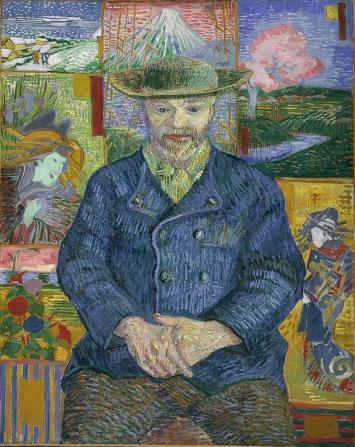
“He felt everything, poor Vincent! He felt too much! It made him want the impossible.” - Père Tanguy. Portrait of Père Tanguy, painted by Vincent van Gogh in 1887
0 notes
Text
i loooooooooooove when an edible hits me like

Portrait of Père Tanguy, Paris, 1887-1888.
5 notes
·
View notes
Text
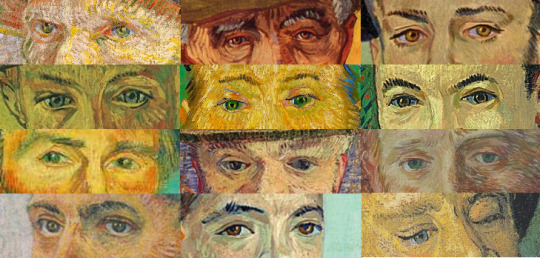
[Image ID. A 3 by 4 grid of portraits by Vincent Van Gogh, cropped to just the eyes. All of the faces are warm-toned, with either brown or blue/green eyes. End ID.]
Van Gogh + Eyes
Self-Portrait with a Straw Hat (1887) / Portrait of Patience Escalier (1888) / Portrait of Armand Roulin (1888) / Portrait of Camille Roulin (1888) / Portrait of the Postman Joseph Roulin (1888) / Portrait of Doctor Félix Rey (1889) / The Smoker (1888) / Portrait of Père Tanguy (1887) / Portrait of the Art-Trader Alexander Reid (1887) / Portrait of a Male Person with Cap (1886/1887) / La Mousmé (1888) / Portrait of a One-Eyed Man (1888)
#van gogh#went to a van gogh exhibit the other day and the way he paints eyes really just#gets me feelin something#also noses ik i cropped them but he does noses + blushes so fucking well#god
30 notes
·
View notes
Text
Edward G. Robinson, the Art Collector By Raquel Stecher
“I was hooked on art—an addict. The only thing real in the world seemed to be catalogs from dealers, galleries and museums.” - Edward G. Robinson
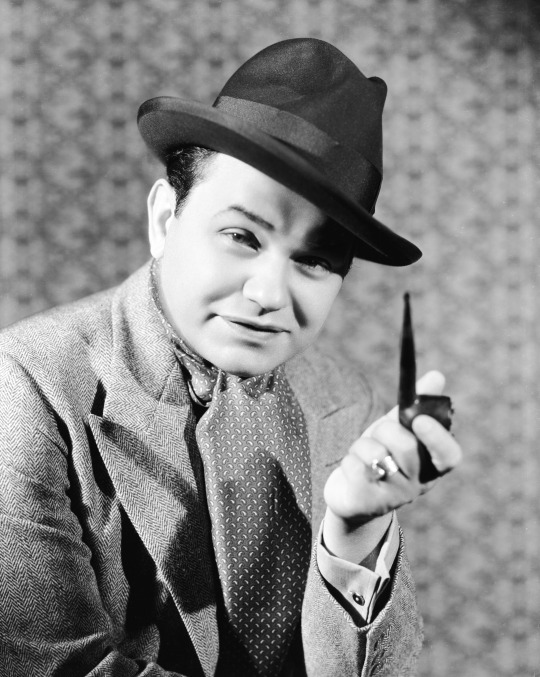
Edward G. Robinson, the cigar chomping star of such crime dramas as LITTLE CAESAR (’31), BULLETS OR BALLOTS (’36), KID GALAHAD (’37) and KEY LARGO (’48), was a gangster on screen but a refined art collector off screen. What began as a childhood fascination eventually blossomed into a full blown obsession. Robinson often joked that, “you don’t collect paintings, they collect you.” Over the years, Robinson collected over 70 works of art, mostly impressionist and post-impressionist paintings. Art was a lifelong passion of his, one he couldn’t just keep to himself but would share with anyone who would listen.
As a child, Robinson would cut pictures of paintings from magazines and add them to his scrapbooks. According to Robinson biographer Alan L. Gansberg, “he would find his way to museums and art galleries, look around, then head back to the Astor Library to discover, in books, what he had seen and why it was renowned.” Robinson’s love extended beyond just collecting, and he developed a pure love of curation. He wasn’t interested in status. And art dealers soon discovered that he couldn’t be swayed by suggestion or opinion. Robinson’s method of selecting his next acquisition was from pure instinct. If the piece spoke to him, he bought it. If it came with an intriguing backstory, even better.
In his autobiography All My Yesterdays, Robinson shares with readers his many art collecting adventures. He started off by purchasing reproductions which he would lovingly frame and hang on the wall or give to friends. His first real purchase was an oil painting entitled “Cow in the Meadow” which he bought for $2 at auction. Since he earned more money working in theatre and in Hollywood, Robinson caught the art buying bug. He’d visit public galleries and private collections in New York City, London and Paris. Robinson became known among art dealers, who would let him take home a painting for a month before purchasing.
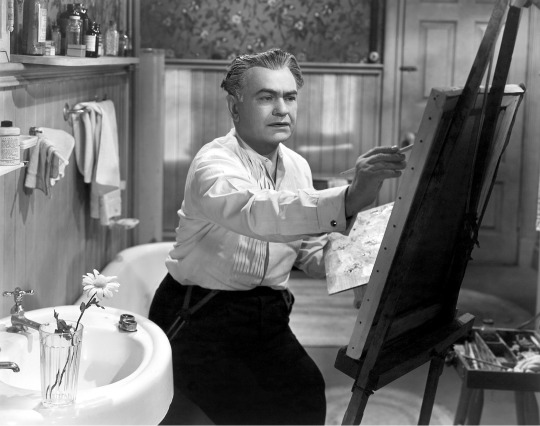
Robinson celebrated big milestones in his life with new art. In his memoir he wrote, “to mark suitably the birth of my son, I bought a good-sized Degas of two dancers and a lovely Pissarro — oh, such a lovely Pissarro — for $2,500 and a Monet painting of some willows for another $2,500.” Robinson fell in love with the work of Georges Rouault, Pablo Picasso, Titian, Francisco Goya, Vincent van Gogh, Paul Gaugin and others. He thought Rembrandt was overrated.
Notable pieces in Robinson’s collection included:
“Daughters of Revolution” by Grant Wood
“The Black Marble Clock” by Paul Cezanne
“Portrait of Père Tanguy” by Vincent van Gogh
“Young Girl with a Hat” by Pierre-Auguste Renoir
“The Artist’s Mother” by Edouard Vuillard
“L’Italienne” by Jean-Baptiste-Camille Corot
“Figure of a Woman (Before the Theater)” by Berthe Morisot
“Jane Avril Dancing”” by Henri de Toulouse-Lautrec
“View of Le Crotoy, from Upstream” by Georges Seurat
“The Vase of Flowers” by Georges Rouault
Over the years, Robinson worked directly with artists. In 1939, he commissioned a painting of himself, his wife Gladys and his son Eddie by Edouard Vuillard. After filming CONFESSIONS OF A NAZI SPY (’39), he took Gladys on a trip to Mexico where he met with Diego Rivera and bought several pieces. It was there that he met Frida Kahlo, who was not yet known in the states, and purchased four of her paintings for $200 each. According to artsy.net, “Robinson’s purchases were Kahlo’s first major sales, her first to an American, and gave her some financial independence.”
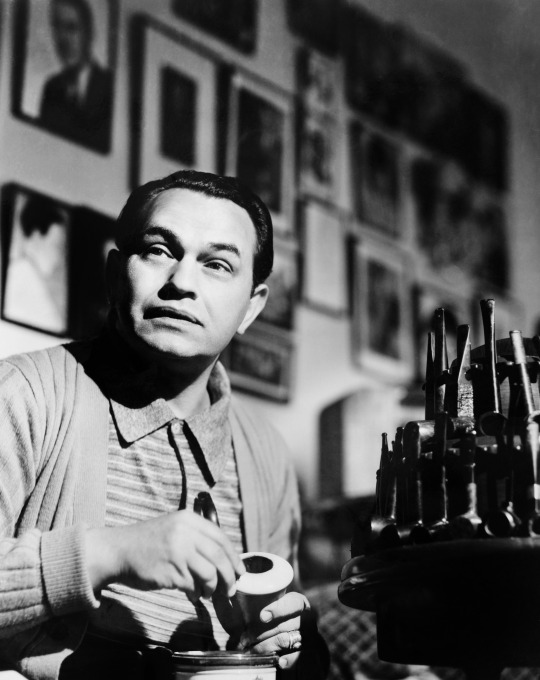
It wasn’t enough for Robinson to keep these pieces to himself. He felt that others should enjoy them too. When he bought a house in Beverly Hills, he petitioned the City Council for permission to build an adjoining gallery on the property. Once complete, he filled it with his prized possessions and opened the gallery to the public by hosting guided tours. Whenever a tour guide failed to show up, Robinson, his wife and even his butler would fill in. Robinson also exhibited his pieces elsewhere including collaborating with friend and fellow art collector Vincent Price on a museum show. In 1953, he loaned out 40 of his paintings for an exhibition at MoMA. The proceeds went to the museum’s New York City School Fund.
Robinson’s collection would diminish drastically when he had to sell 60 paintings as part of a divorce settlement. An auction was planned until Stavros Niarchos, a wealthy Greek shipping magnate, stepped in and bought the whole kit and caboodle privately for $3.5 million. It pained Robinson to lose so many of his darlings all at once. He eventually bought 14 of those pieces back from Niarchos and from other private collectors who purchased them after the original sale. Robinson was able to buy back some of his favorites from Cezanne, Renoir, Seurat, van Gogh and Gaugin. When Robinson remarried in 1958, he and his new bride Jane Robinson (nee Bodenheimer), a fashion designer who went by the name Jane Arden professionally, set out to build the collection back up again. A couple of years after Robinson passed away, Jane published a coffee table book called Edward G. Robinson’s World of Art as a way to pay tribute to Robinson’s lifelong passion.
#Edward G. Robinson#art#impressionism#post impressionism#vincent van gogh#picasso#TCM#Turner Classic Movies#Hollywood#Raquel Stecher
120 notes
·
View notes
Photo
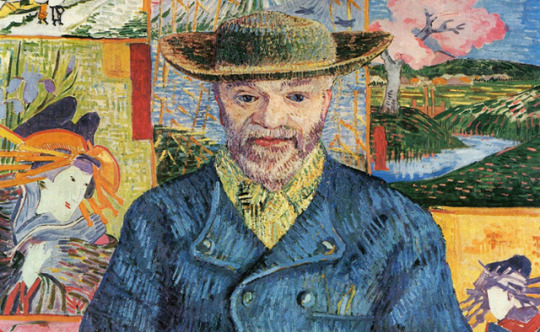

Vincent van Gogh, “Portrait of Père Tanguy,” 1887. / John Sessions as Julien “Père” Tanguy in Loving Vincent.” (2017)
#Portrait of Père Tanguy#Vincent van Gogh#Père Tanguy#Julien Tanguy#1887#Painting#Art#Loving Vincent#John Sessions#Film#van Gogh
0 notes
Photo

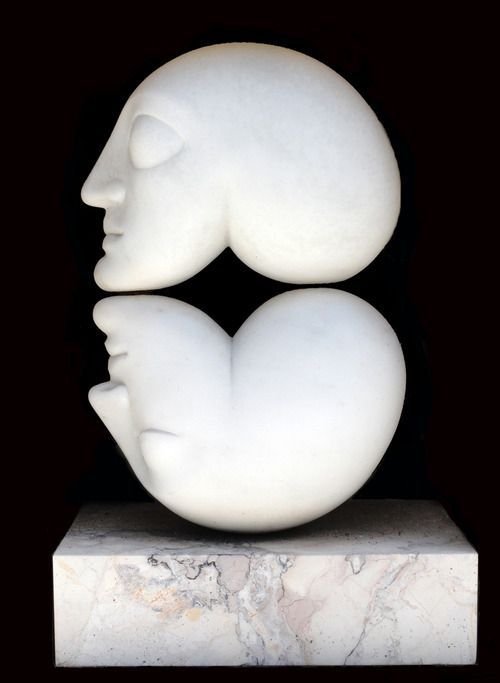

Victor Brauner (b in Moldova, 1903 - 1966, Paris)
Romanian painter, sculptor and draughtsman, active in France. As a child, he shared his father’s passionate interest in spiritualism, heralding a lasting preoccupation with the occult. In 1912 he accompanied his family to Vienna, and from 1916 to 1918 attended the evangelical school at Braila, near Galati, studying zoology with great enthusiasm; he also started to paint.
In 1921 he spent a brief period at the School of Fine Arts in Bucharest, where his first exhibition was held in 1924 at the Galerie Mozart. The same year, Brauner and the poet Ilarie Voronca founded the review 75HP, in which he published his manifesto of ‘Pictopoésie’ and an article on ‘Le Surrationalisme’. From 1928 until 1931 he worked with the Dada and Surrealist review UNU, which reproduced his drawings and paintings. Settling in Paris in 1930, he met Constantin Brancusi, who introduced him to photography, and Yves Tanguy, through whom he met the major Surrealists. He lived in the same building as Tanguy and Alberto Giacometti. His premonitory Self-portrait with Enucleated Eye (1931; Paris, priv. col.) became a cause célèbre for the Surrealists, whom he joined officially in 1932.
André Breton wrote the introduction for his first one-man show at the Galerie Pierre in 1934, the year of Monsieur K’s Power of Concentration (Paris, priv. col.) and the Strange Case of Monsieur K (priv. col.), departures from Brauner’s earlier work and reminiscent of Alfred Jarry’s Père Ubu. Returning to Bucharest briefly in 1935, he joined the clandestine Romanian Communist Party but left in 1936 at the beginning of the Soviet show trials.
http://www.all-art.org/art_20th_century/brauner2.html
4 notes
·
View notes
